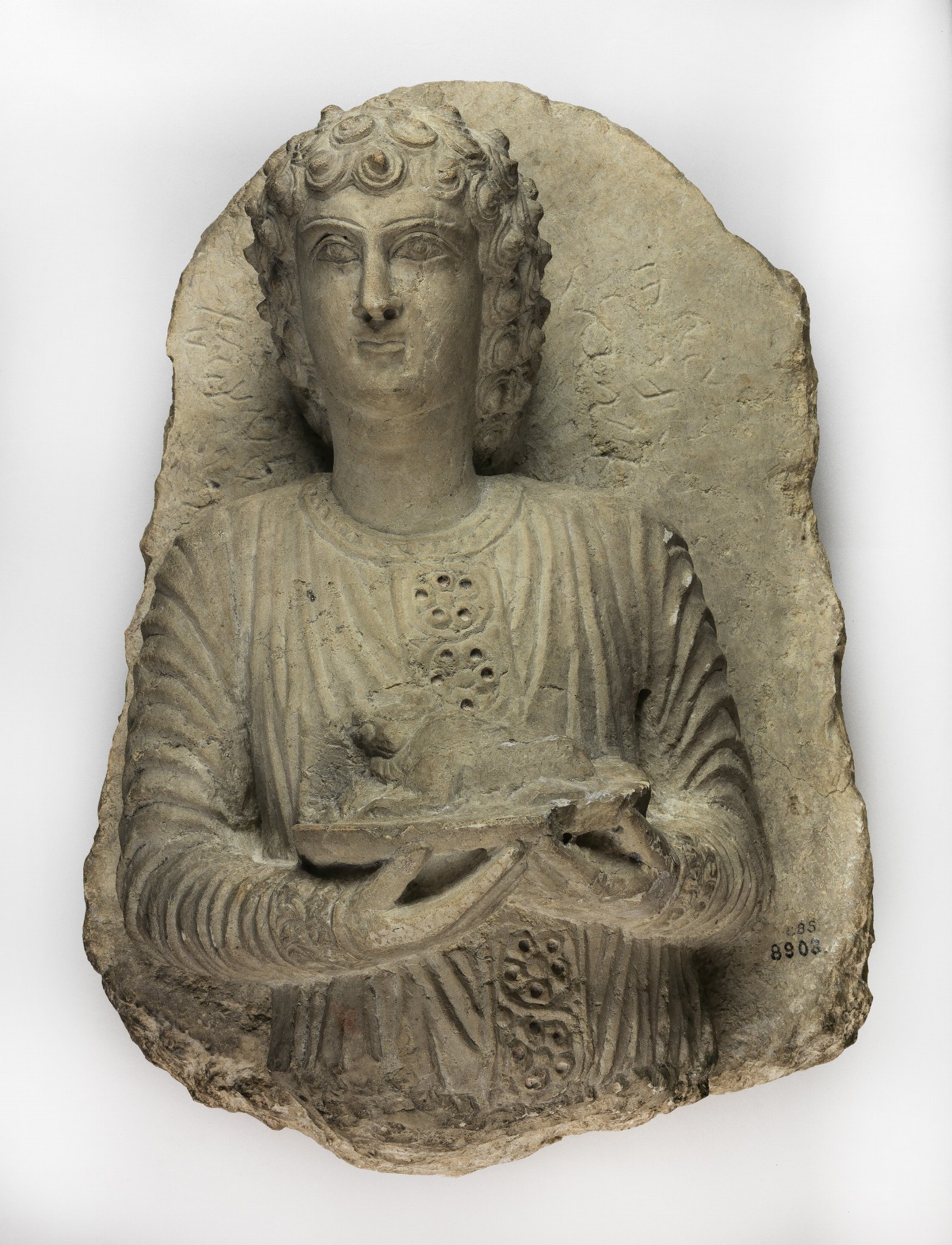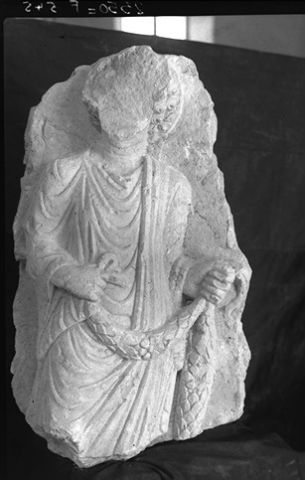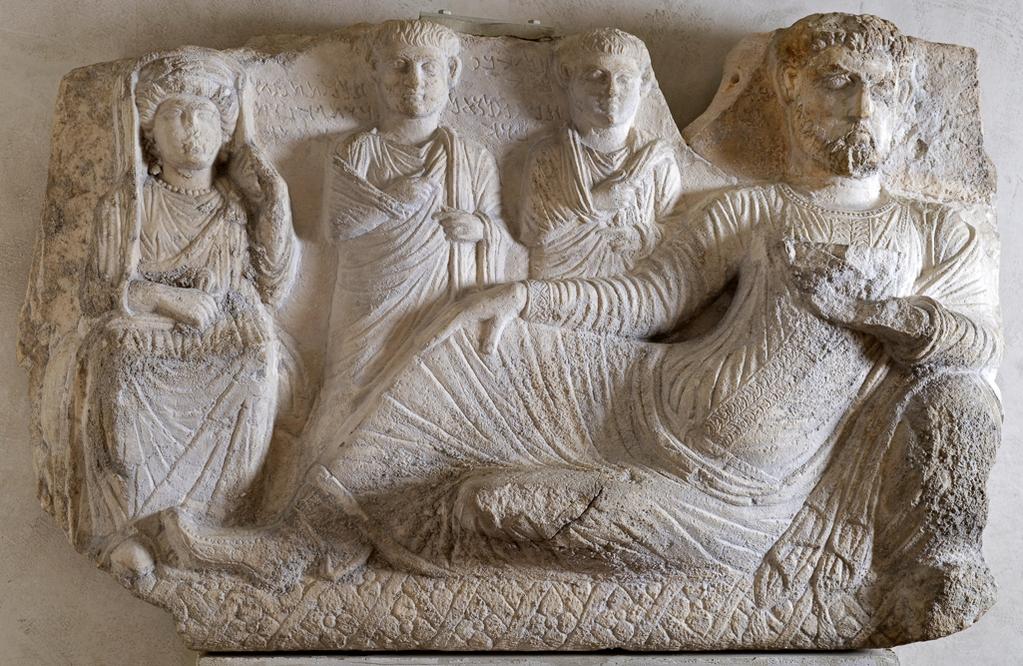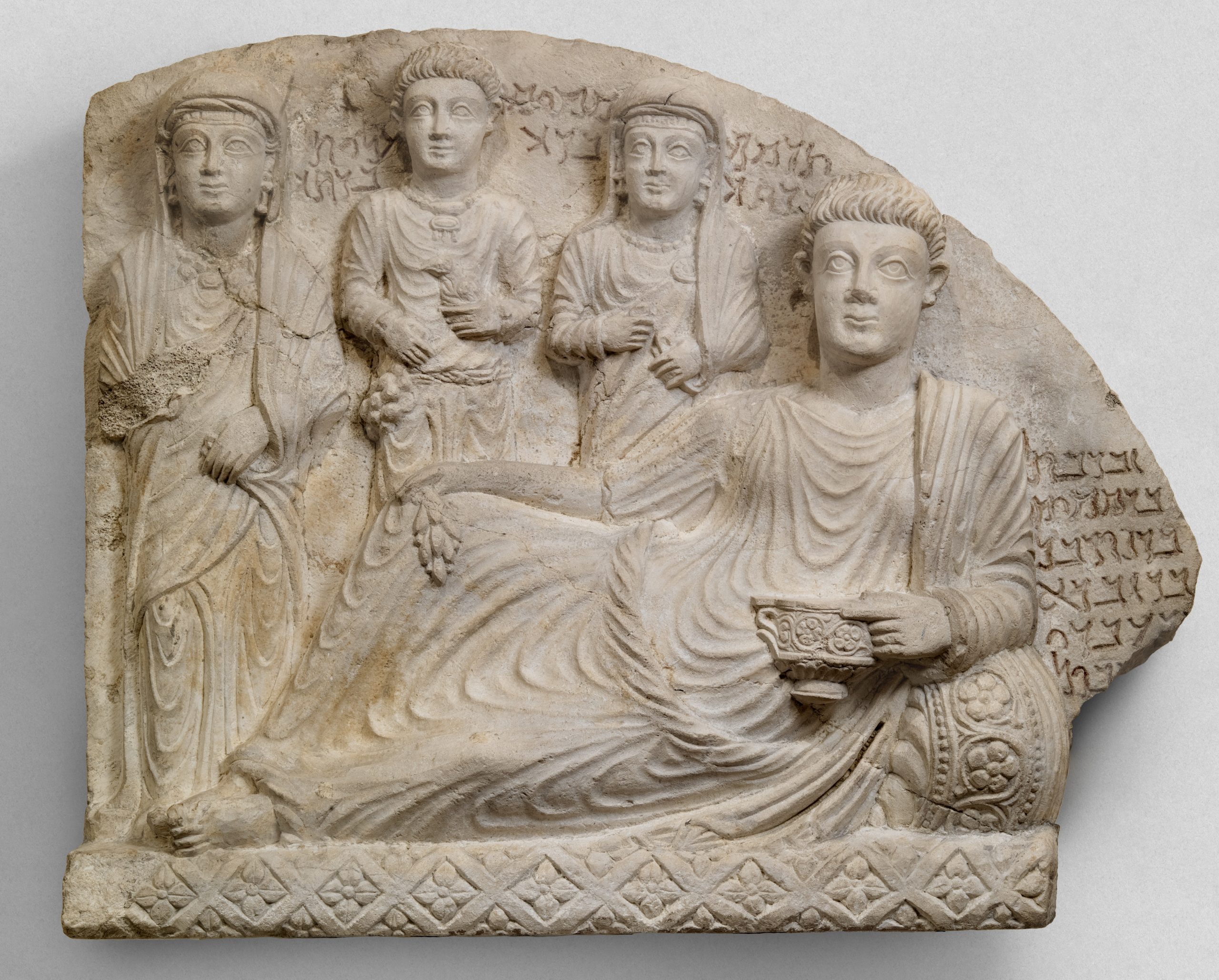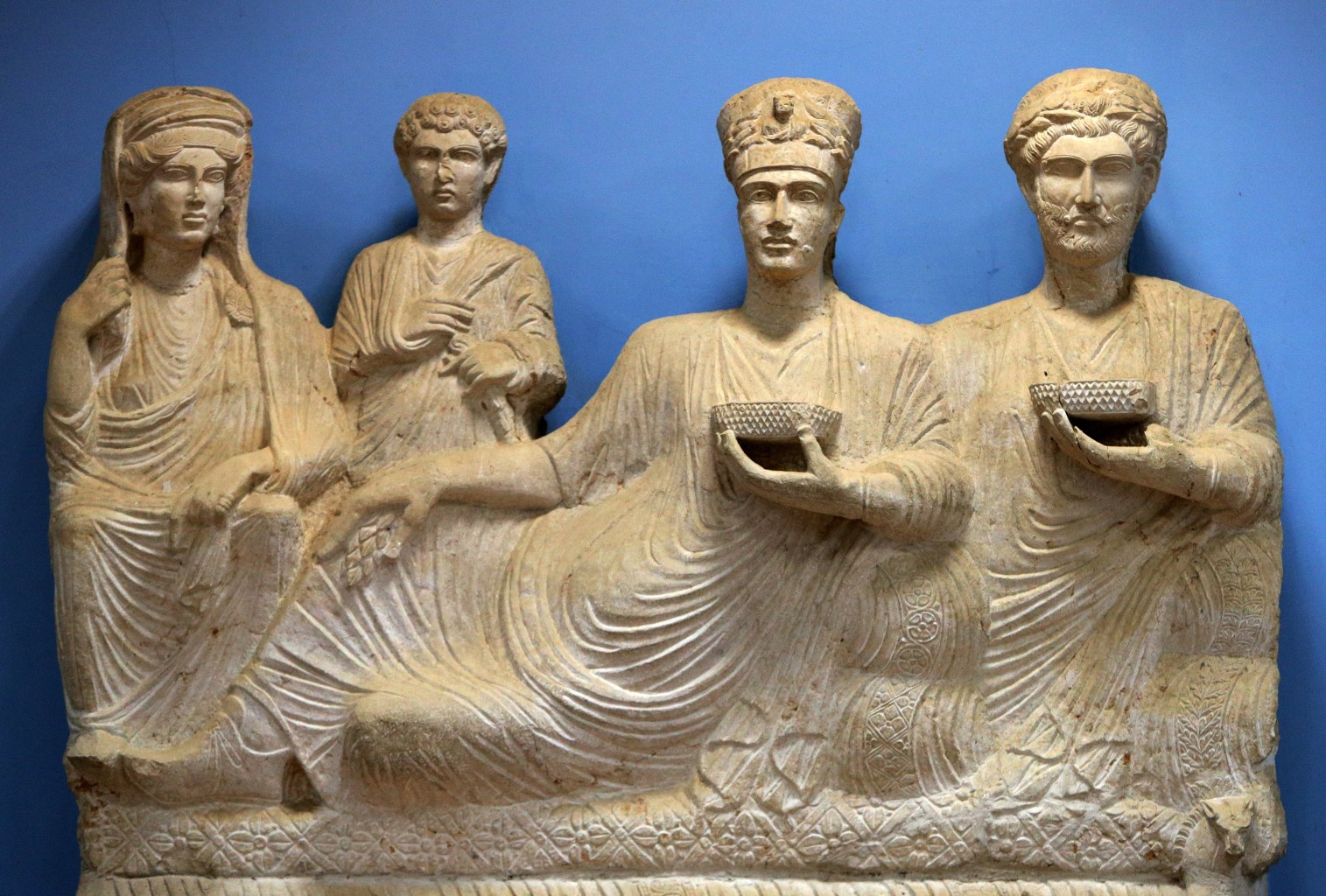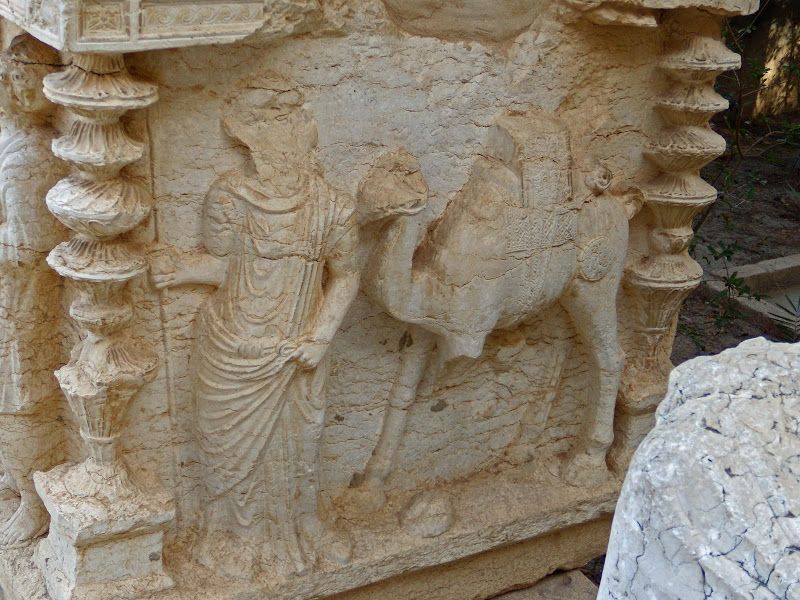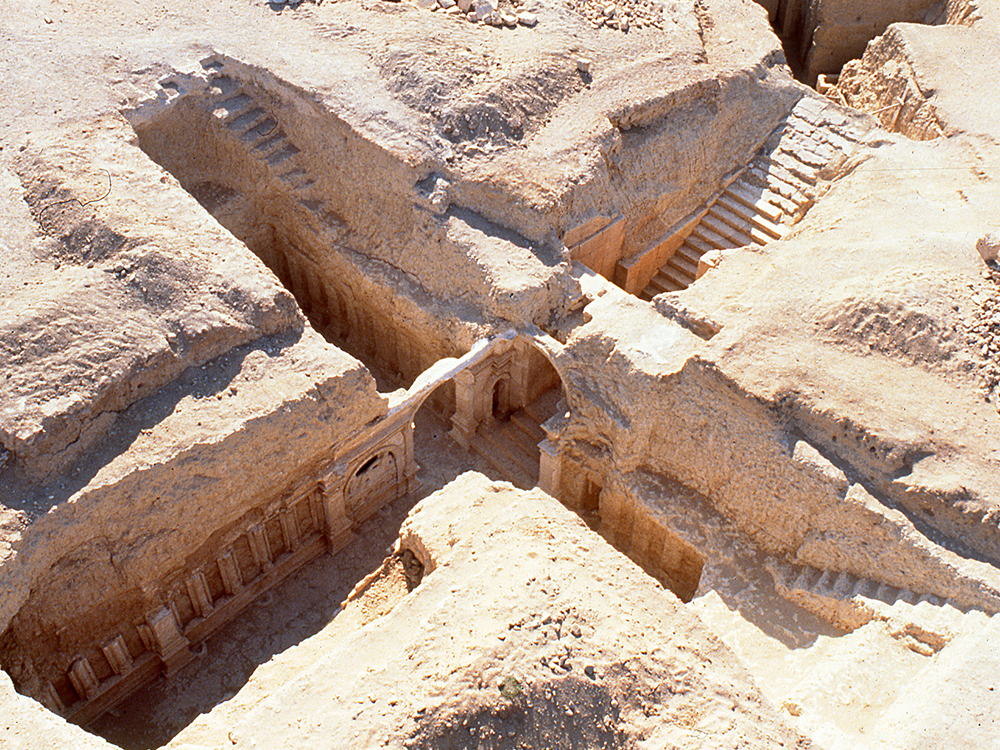Excerpts from an article by Julia Jacobs and Tom Mashberg published by the New York Times Aug. 8, 2022
https://www.nytimes.com/2022/08/08/arts/design/antiquities-looting-warrant-georges-lofti.html

[funerary relief, a banquet scene]
“Investigators Say Collector Had Suspect Art and Lots of Chutzpah
For years, Georges Lotfi made himself a valuable source of information to prosecutors investigating the global trafficking of looted antiquities.
His diagram of how international smuggling networks operated was used as a teaching tool, one federal agent said in the papers, an outline that helped the Department of Homeland Security in its pursuit of traffickers.
But now there is a warrant out for the arrest of Mr. Lotfi, who is charged with criminal possession of stolen property and who investigators say was himself involved, for decades, in trafficking stolen antiquities.
In what is characterized in court papers as an act of hubris, Mr. Lotfi, 81, is said to have invited the authorities to inspect antiquities that he was holding in a Jersey City, N.J., storage unit, which they did in 2021.
According to the affidavit that accompanied the arrest warrant, dated Aug. 3, he was so confident in his ability to convince law enforcement that the objects were legitimately purchased that he invited the agents in, hoping their involvement would provide the stamp of approval he needed to successfully sell or donate the items.
Robert Mancene, a Homeland Security agent who was involved in the investigation, wrote in the affidavit that he imagined Mr. Lotfi thought his helpful relationship with Mr. Mancene — and with Matthew Bogdanos, who leads the Manhattan district attorney’s Antiquities Trafficking Unit — would place him above suspicion.
“Based on my conversations with the defendant over the last several years,” Mr. Mancene wrote, “I believe the defendant thought he had laundered the antiquities so well and had created such good (albeit false) provenance that he did not think the A.T.U. would be able to determine their true origin.”
Instead, according to the court papers, investigators are now pursuing Mr. Lotfi, who has had homes in Lebanon, France and New York. […]
The 24 antiquities seized as part of the unit’s investigation include 23 mosaics from Syria and Lebanon and a 1,500-pound carved limestone sculpture, referred to as the Palmyra Stone, that the affidavit says is originally from that ancient Syrian city. The individual items ranged in value from $20,000 to $2.5 million, the affidavit said.”


[…]
“In the interview, Mr. Lotfi said that when he started collecting in 1960, it was not typical to question where antiquities originated from.
“It was like getting a baguette from the boulangerie,” he said. “It was not a big deal, and nobody will look for provenance.”
Now, he said, he acknowledges that the rules around collecting have changed but said that he cannot go back and change what occurred decades ago.
Mr. Lotfi, who described himself as a lover of art and history who once owned an apartment on Fifth Avenue because of its proximity to the Met, said he invited the investigators in to look at some of his artifacts because he was interested in loaning some — not selling them — to an American museum.
“I am not a smuggler,” he said. “I am a collector.”
Mr. Lotfi said he had intended to return some of the artifacts to Lebanon but that the American investigators responded by seizing them.”


